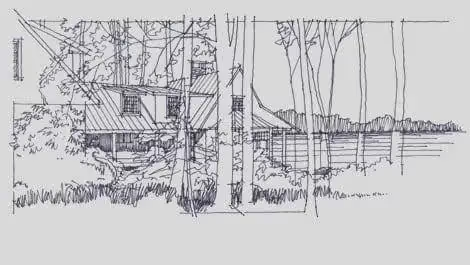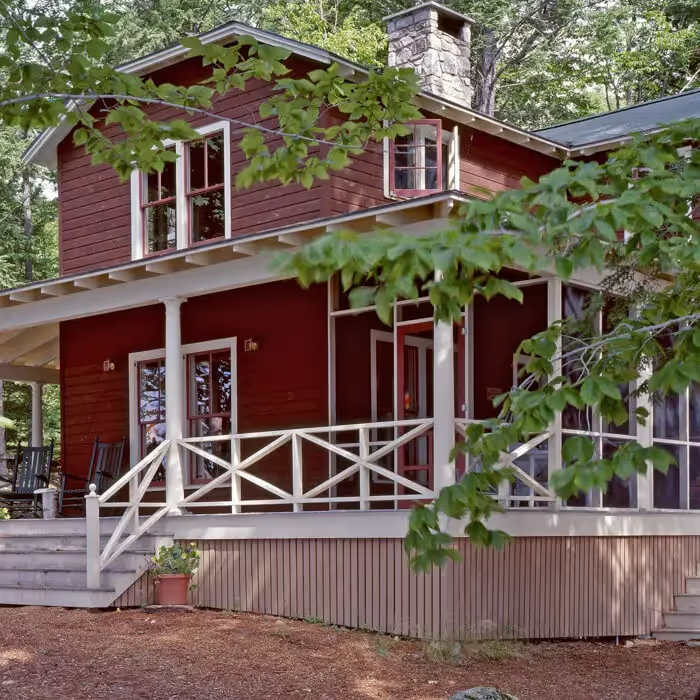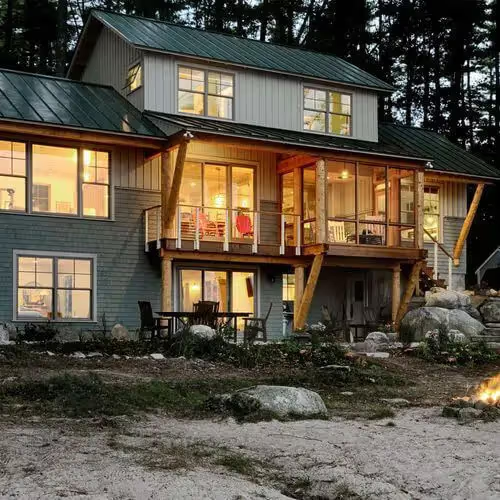Camp Stew


Project Location: Wolfeboro, New Hampshire
Certification: 2010 LEED Gold Certification
The Native American name “Winnipesaukee” means “beautiful water in a high place.” This half-acre previously developed site in New Hampshire fits that description perfectly. The low-value existing home, however, did not meet lake zoning standards and did not take advantage of all the location had to offer.
We designed a new efficient, highly crafted, low-maintenance, four-season home with outside living spaces that embrace the natural features of the site. Our clients wanted their new home to be different from the suburban-styled houses that dominate the neighborhood. Affectionately named Camp Stew by its owners, the house will initially serve as a frequent escape for a couple approaching retirement, and in the near future, will become their permanent home.
Our site-specific design allows cars to be left behind and forgotten at the east end of the site. On approach, a welcoming entry porch shelters the gap between the house and garage and serves as a gateway, separating public spaces from private ones. The entry path then moves toward the front door along the edge of an outdoor room that is created between the house, garage, and tree line to the north. This intimate space, complete with native hardscape and vegetation, offers protection from lake winds while also giving shady refuge on hot summer days.
Even though it is comprised of cozy, right-sized spaces, the main level feels open and spacious — at once, both big and small. The central fireplace divides living from dining and serves as the heart of the home. The floor plan and windows are organized to take advantage of light and focus on views of nature, while avoiding less desirable views of neighboring properties. The use of wood on the interior and exterior reflects the surroundings outside and is in keeping with the lake vernacular.
High-performance insulation, energy-efficient systems, and extensive use of durable and local building materials all contribute to the sustainability of the project.
Project Completion Date: 2009
Photography:
Collaborators:
- Landscape Architect: Richardson & Associates
- Structural Engineer: Shelley Engineering
- LEED Certification Consultant: Context Green
Related Press:





